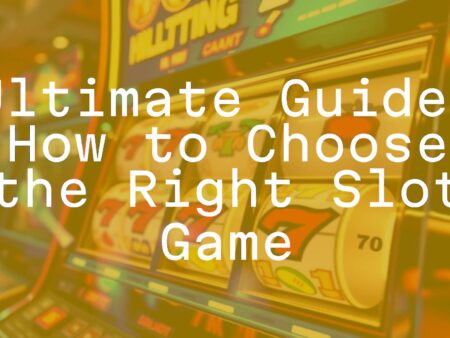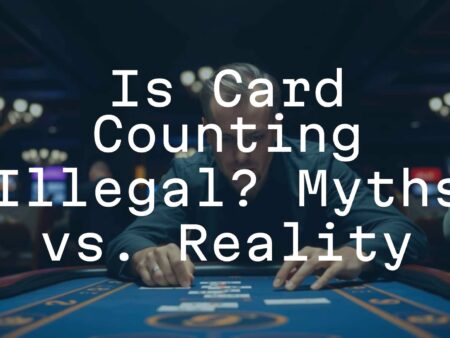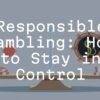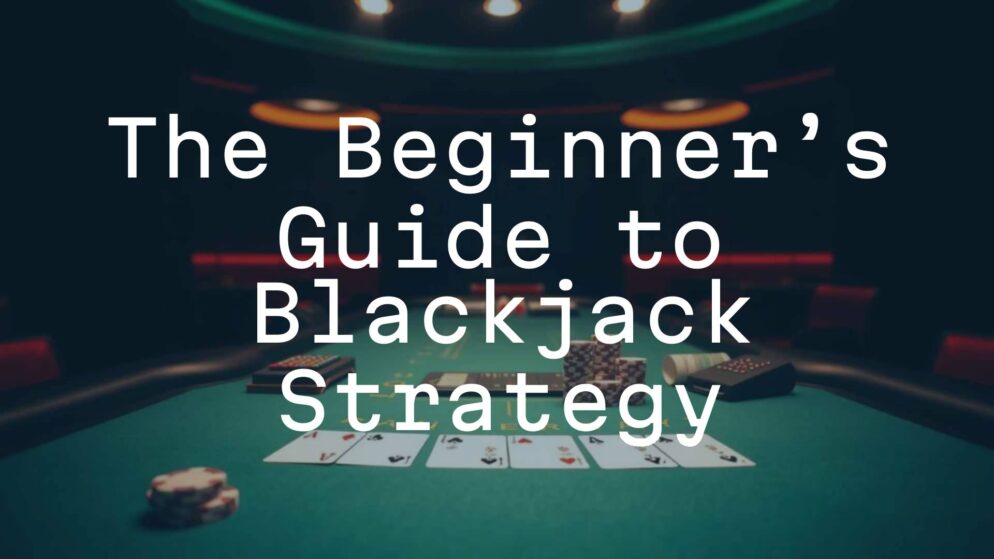
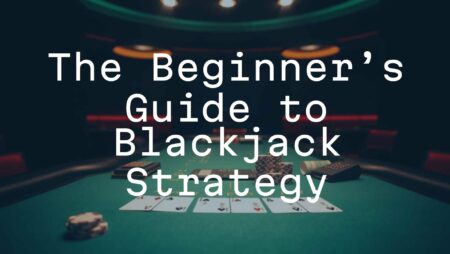
Blackjack, also known as 21, is a well-known card game that combines simple rules with the need for smart choices. Unlike many luck-based games, your decisions in blackjack really do affect how often you win. If you’re new to the game, learning basic blackjack strategy helps you play smarter, making better choices to bring down the casino’s built-in advantage, known as the house edge. This guide covers everything from the rules to easy strategy tips, so you’ll be ready to approach the table with confidence and a plan.
What Is Blackjack and How Do You Play?
Basic rules and the goal
Blackjack is a one-on-one game between you and the dealer. You’re not competing with other people at your table; instead, your aim is to have a hand total as close to 21 as possible – without going over. Your hand must also beat the dealer’s total. If you go over 21, you automatically lose, which is called “busting.”
The game is played with a dealer and several players sitting at the table. Everyone makes their bets first – these bets must stay within the posted limits for that table. Your wager is the starting point for that round.
Card values
- Number cards (2-10): Worth their shown value. For example, a 5 of diamonds is worth 5 points.
- Face cards (Jack, Queen, King): These are all worth 10 points each.
- Ace: An Ace can be played as either 1 point or 11 points, whichever is better for your hand. This gives “soft” hands more flexibility, such as Ace and 6 being counted as either 7 or 17.

How a round works
Once all bets are placed, the dealer gives two cards to each player (usually face up), and two to themselves (one face up and one face down, called the “hole card”). The dealer’s visible card (the “upcard”) is important for your strategy choices.
After checking for a dealer blackjack, the action starts to the dealer’s left. On your turn, your choices are:
- Hit: Ask for another card.
- Stand: Keep your current hand total.
- Double Down: Double your bet for just one more card.
- Split: If you get two cards of the same rank (like two 8s), you can split them into two hands with an extra bet equal to your original wager.
- Surrender: Some casinos let you give up the hand and save half your bet right away if you think your chances of winning are very low.

After all players make their moves, the dealer reveals their hidden card and plays out their hand by set casino rules (they must hit until 17 or higher). If the dealer busts, the players still in the round win. If not, whoever is closer to 21 wins; if you tie, it’s called a “push” and you get your bet back. Standard wins pay even money (1 to 1). A “natural” blackjack (Ace and 10-value card to start) usually pays 3 to 2.
House Rules That Change How You Play Blackjack
Although blackjack’s main goal is the same everywhere, casinos have small rule differences that can change the best way to play. Knowing these rules before you join a game can help you pick the right actions and improve your odds.
How many decks are used?
Some games use just one deck of cards, but you might also see two, four, six, or even eight decks at play. Fewer decks slightly increase your chances of winning. It’s also easier to keep track of the cards if there are less in play, though even basic strategy players should be aware of how many decks are used for the smartest plays.
Does the dealer hit or stand on soft 17?
This is one rule that often varies. A “soft 17” is a hand that makes 17 and includes an Ace counted as 11 (like Ace-6). In some places, the dealer always stands on any 17 (this is called “S17”). Other times, the dealer hits on soft 17 (“H17”), which makes it a bit harder to win as the dealer has a better chance to improve their hand. S17 games are better for the player. Your strategy may change depending on which rule the table uses.
Doubling down and splitting rules
- Doubling Down: Sometimes you can double your bet on any two cards; other casinos only let you do this on totals of 9, 10, or 11. More freedom to double down helps the player.
- Splitting: Some casinos let you split pairs more than once (re-split) or allow you to split Aces and then hit again. The more flexible these rules, the better it is for you.
Surrender and insurance
- Surrender: Lets you give up and only lose half your bet right away-usually after the dealer checks for blackjack. It’s a smart move in certain bad situations.
- Insurance: If the dealer’s upcard is an Ace, you can buy “insurance,” a side bet at 2 to 1 odds that the dealer has blackjack. For new players, insurance is a bad choice, since the odds don’t work in your favor and it adds more money for the house over time.
Being aware of these rules helps you focus on games with better odds and make the right calls during play.
Payouts and Odds: Why They Matter in Blackjack
The way you get paid for different wins in blackjack affects your results almost as much as strategy. Here’s what you need to know.
Standard payouts
The normal payout for beating the dealer is 1:1. For a “natural” blackjack (Ace plus a 10-value card as your first two), you usually get paid 3:2, which is better for the player. For example, a $10 bet would win $15 if you get a blackjack. If you and the dealer both get blackjack, or your hand total is the same as the dealer, it’s a tie (“push”) and your bet is returned. Look for tables labeled “Blackjack Pays 3 to 2.”
Why 3:2 is better than 6:5 payouts
More casinos are starting to offer 6:5 payouts for blackjack, which pays $12 for every $10 bet, instead of $15 for 3:2. This smaller payout may seem minor, but it adds up and gives a much bigger edge to the house. If possible, only play at tables offering 3:2 for blackjack.
| Payout | Amount for $10 Bet |
|---|---|
| 3:2 | $15 |
| 6:5 | $12 |

This means your best chances come when you find games with the traditional 3:2 payout.
Understanding Basic Blackjack Strategy
Basic blackjack strategy is a list of the best moves to make in every situation, calculated by computers over millions of hands to see what works best. It’s based on your two cards and what the dealer is showing, and lets you play the hand in the way that loses the least money over time.
How does it help you?
By following basic strategy, you can bring the house edge down to about 0.5%, compared to up to 2% if you just guess or rely on instincts. This doesn’t guarantee constant wins, but over the long run it means you lose less money and stretch your funds further.
What affects basic strategy?
- Your hand total: Whether you have a hard total (no Ace or Ace as 1), a soft total (Ace as 11), or a pair.
- The dealer’s upcard: If the dealer shows a low card, they’re more likely to bust, which should affect your choices. If the dealer’s upcard is high, they are less likely to go over 21, so you might need to hit more often.
- House rules: Rules like “dealer hits/stands on soft 17,” or strict rules on splitting and doubling, can change the best move slightly.

All of these factors go into the strategy chart, so you can always make the best possible choice.
How to Read and Use a Blackjack Strategy Chart
The strategy chart is an easy-to-use tool listing the right action for every hand versus every dealer upcard. The more you practice the chart, the easier and faster your decisions will be.
When to hit or stand
- Hard totals: With totals of 12-16, you often stand if the dealer shows 2-6, hoping the dealer busts. Against a dealer 7 or higher, you should usually hit, looking to improve your hand. Always stand on 17 or more.
- Soft totals: If you have an Ace as 11, like Ace-7, you might stand against a weak dealer card, but hit against a strong one, or double if allowed.
As a rule: hit on anything 8 or less, and sometimes as high as 16, depending on what the dealer has.
When to double down
Double down when the odds are on your side, usually with a total of 10 or 11 (and sometimes 9), especially when the dealer shows a low card. This is where you double your bet to hopefully win more money in a strong spot.
When to split pairs
- Always split Aces and 8s: This gives you two chances at strong hands rather than starting with a weak one.
- Never split 10s: A hand of 20 is so strong you shouldn’t risk breaking it up.
- Split 2s, 3s, 6s, 7s, and 9s: Split these mostly against a weak dealer upcard (2-6).
When to surrender
If the “surrender” option is available, use it when the odds are really against you, such as a hard 16 against a dealer’s 9, 10, or Ace. That’s when giving up half your bet is better than losing it all.
Memorizing and using the chart
Strategy charts are organized with your hand down the left side and the dealer’s upcard across the top. Where your hand and the dealer’s card meet, you’ll see the best move. There are different charts for S17 and H17 rules, as well as for the number of decks in play. Memorize the one that fits the game you play most – or bring a printed card with you if the casino allows it. The more you use the chart, the easier the choices will become.
Top Tips and Traps for Beginners
Besides using a strategy chart, keep these practical tips and common mistakes in mind when you’re getting started:
Avoiding insurance bets
The most important advice for beginners is simple: never take insurance. It might promise a decent payout if the dealer hits blackjack, but it’s a bad bet for you. The house collects a bigger profit whenever players buy insurance, and it’s even worse if you’ve got blackjack yourself – you’ll only get 1:1 instead of 3:2. Unless you really know what you’re doing (like a card counter), skip it every time.
Watching the dealer’s upcard
The dealer’s face-up card should always guide your decisions:
- Dealer shows 2-6 (“bad” cards): Play more carefully. Stand more often, since the dealer has a higher chance to bust.
- Dealer shows 7-Ace (“good” cards): Hit more aggressively. You’ll need a better hand to win, so take more risks.
Start with small bets and careful bankroll management
- Play small at first: Keep your bets low when you start or when a new dealer comes in, until you feel comfortable.
- Set a limit: Decide how much money you’re willing to lose before you play, and never go over that amount.
- Don’t bet more than half your stack on one hand: This helps you avoid going broke quickly.
Good money management means you’ll be able to keep playing and learning longer, which helps your chances in the long run.
Common mistakes to avoid
- Ignoring basic strategy and playing by feeling.
- Taking insurance bets (just don’t).
- Splitting 10s (leaving a strong hand worse off).
- Not splitting Aces and 8s (stuck with weak hands).
- Chasing losses by betting bigger and bigger after a losing streak.
- Letting other people’s choices affect your own game. Your results are about you versus the dealer – focus on your hand and the dealer’s upcard.
Keeping these points in mind will help you have a better time and avoid costly mistakes.
Should Beginners Try Card Counting?
Some people want to “beat the casino” by counting cards, but it’s not what it seems for new players.
Is card counting legal – and worth it?
Card counting tracks high and low cards left in the deck, which can help you bet more when the deck is good for players. Technically, card counting isn’t against the law – but casinos don’t like it and will ask you to leave if they think you’re counting. They take steps to make counting harder too, like shuffling more often.
If you’re just starting with blackjack, card counting isn’t recommended. It’s a lot to handle on top of basic strategy. Trying to count cards right away will probably lead to errors and lost money. Focus on understanding and applying basic strategy first before even thinking about more advanced tricks.
Simple Ways to Practice and Improve
Getting better at blackjack is about more than reading tips – you need time at the (real or virtual) tables.
Try free online blackjack
- Chart practice: Make every decision using a basic strategy chart until it’s automatic. Many online games even tell you if you’re wrong.
- Get used to the game flow: Learn the pace, betting process, and when to hit, stand, double, split, or surrender.
- Test what you’ve learned: Try out different situations in a risk-free setting before using real money.
You can also buy or make a blackjack table layout for home practice, using poker chips to simulate real play.
Getting ready for real-money play
- Set a budget – and stick to it.
- Choose tables with player-friendly rules (3:2 blackjack payout, dealer stands on soft 17).
- Start with low stakes to stretch your play time and make it easier to stick to your strategy.
- Avoid distractions, alcohol, or playing when you’re tired – clear thinking is best for blackjack.
Building confidence at the table
- Use a printed strategy card if allowed – it’s not cheating.
- Sit away from “first base” so you have extra time to think when it’s your turn.
- Ask the dealer for clarification if you’re unsure about a rule.
- Remember, your decisions affect only your hand, not anyone else’s. Play your own game.
What to Do Next as a Blackjack Beginner
Now that you know the rules and have some practice under your belt, it’s time to find a place to play for real and keep learning how to improve.
Playing online or in a casino
- Online games:
- Play any time from home, with loads of free practice options.
- Many rule variations are available, so you can find your favorite type of blackjack.
- Keep a strategy chart open for quick reference.
Make sure you pick a trusted, licensed online casino.
- In-person casinos:
- Enjoy the excitement and social side of playing at a real table.
- Watch and learn from others at the table.
- You get the extra fun of handling real cards and chips.
When playing live, look around for tables with the best rules for players (3:2 payout, dealer stands on 17).
Start with small bets and stick to the basics until you’re comfortable. It’s better to play smart than to play big.
Ways to learn more
- Read books and guides: There are books like “Professional Blackjack” by Stanford Wong for people who want in-depth strategies and information about card counting.
- Online tutorials: Some websites offer free or paid video lessons for different levels.
- Blackjack practice software: Practice with feedback to learn and improve faster.
- Blackjack forums: Talk with other players to get advice and motivation for improving your skills.
Keep in mind, blackjack is a game where regular practice, knowledge, and patience can really pay off. The more you learn and stick to the right strategies, the more you’ll enjoy your time at the table.


